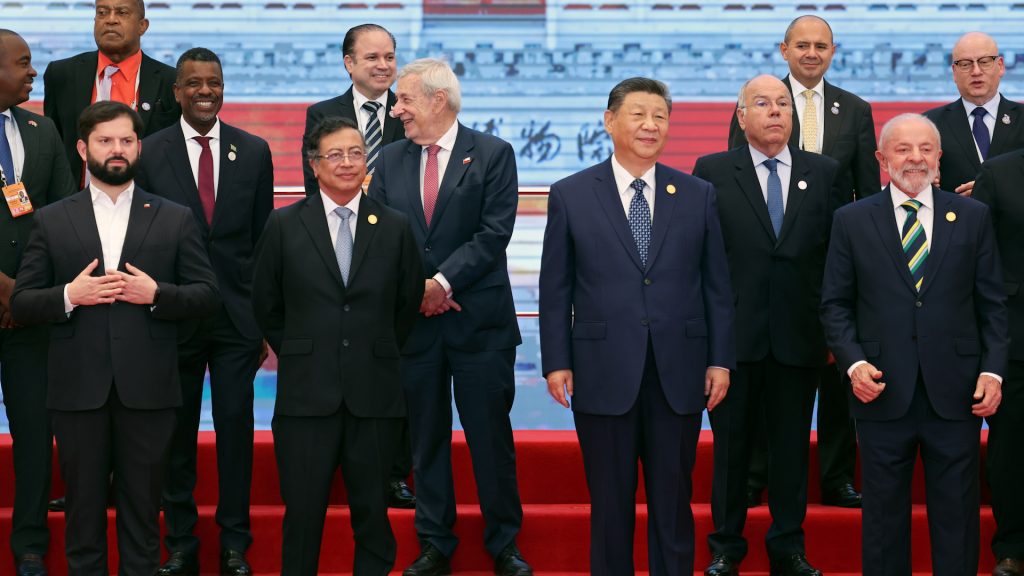China boosts Latin America ties after US tariff retreat

One day after the U.S. and China paused their escalating trade war, Chinese President Xi Jinping hosted leaders from across Latin America and the Caribbean in Beijing. The timing followed a major tariff rollback between the world’s two largest economies and marked the opening of the China-CELAC Forum’s fourth ministerial session.
Chinese leadership positioned the summit as a pivot toward global partnership amid what it called the rise of “unilateralism and protectionism.”
Xi framed China as a counterbalance to U.S. economic pressure, urging cooperation over confrontation. Without naming the U.S. directly, he warned that “bullying” and “hegemonism” would only lead to self-isolation.
Unbiased. Straight Facts.TM
Chinese President Xi Jinping pledged $9 billion in credit and expanded imports from Latin America, focusing on clean energy, AI and infrastructure.

What did China promise to Latin America?
Xi announced five initiatives aimed at deepening ties with Latin America and the Caribbean. These include a $9 billion credit line to support regional development and new incentives for Chinese companies to invest more heavily in the region. Beijing also pledged to expand imports from Latin America, including sectors like clean energy, digital infrastructure and artificial intelligence.
Chinese officials described the moves as part of a broader plan to strengthen the global South’s role in shaping international development.
How does this relate to US-China trade tensions?
The summit came less than 24 hours after the U.S. agreed to reduce tariffs on Chinese imports by 115% for a 90-day negotiation window. The rollback brought average tariffs from 145% down to 30%, while China cut its retaliatory duties from 125% to 10%. Additional restrictions were suspended, such as Chinese curbs on critical mineral exports.
Though the agreement eased tensions temporarily, longstanding disputes — ranging from fentanyl precursors to semiconductor access — remain unresolved.
What is China’s broader strategy?
Beijing’s moves reflect a push to expand global influence as it competes with the U.S. for leadership in trade, technology and diplomacy. Analysts said China sees economic outreach to Latin America as both a geopolitical opportunity and a response to U.S. efforts to isolate it through tariffs and tech restrictions.
Xi used the CELAC summit to promote China’s message of global cooperation, telling delegates that shared growth, not confrontation, was the path forward. For many in attendance, the mix of financing, investment and political solidarity appeared to signal a growing alternative to traditional U.S.-led alliances.





